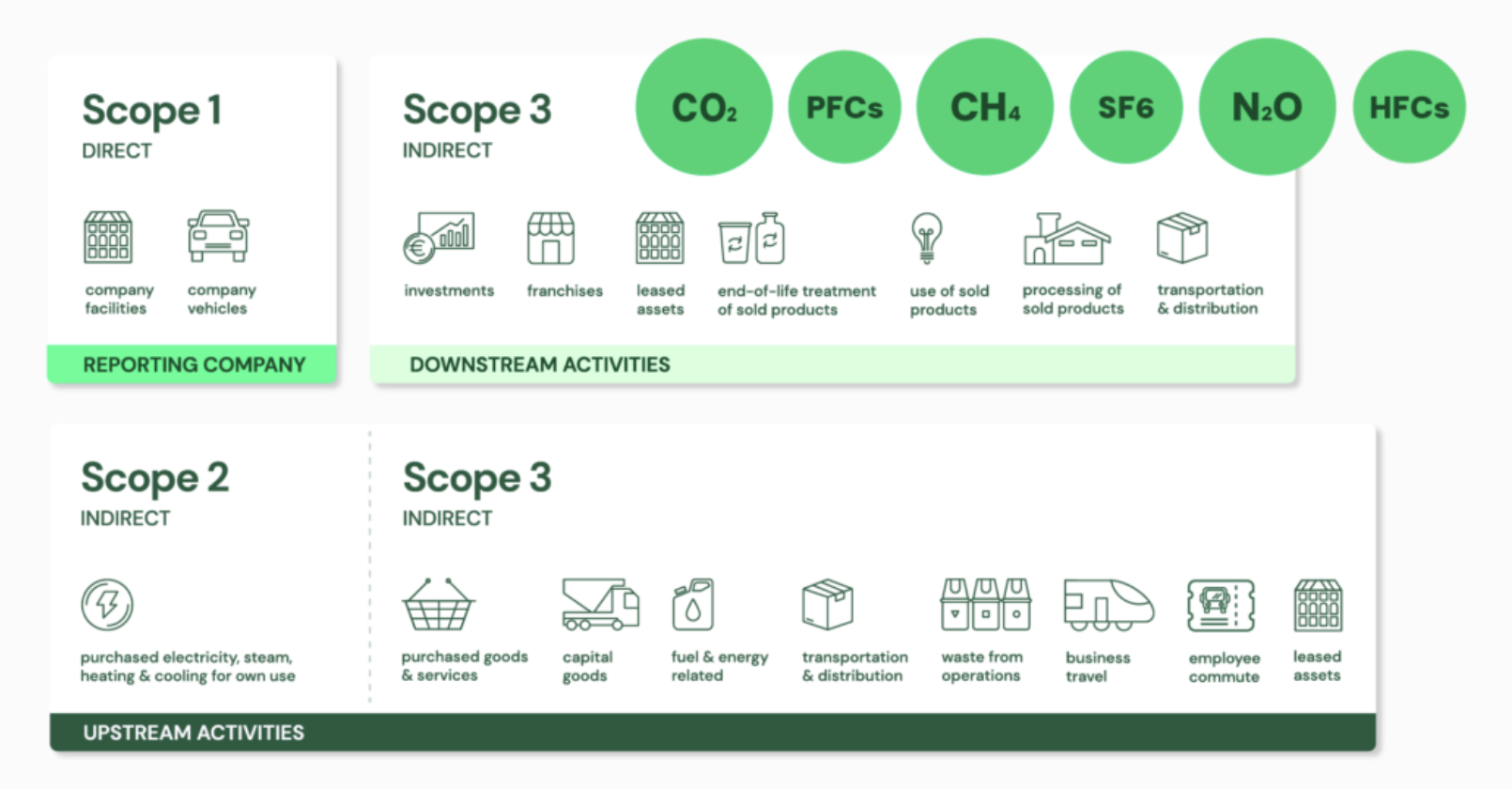New environmental, social and governance (ESG) initiatives and Greenhouse Gas Protocol (GHGP) created the need for organizations to track and report on their carbon emissions for the first time. This is extremely difficult, because few software and hardware systems were created with tracking carbon as a use case, nor was it a business practice or a measurement for anyone but energy suppliers.
As your organization moves quickly down the climate accounting path it’s useful to understand the systems involved in this process and how they will work together to track carbon consumption, production and reporting of it to regulatory organizations. See the Carbon Accounting Data Map below (Figure 1).

Data Acquisition
Carbon emission data contains two factors: carbon activity data and carbon emission factors. By multiplying carbon activity data and carbon emission factors, you can calculate your carbon emissions. For carbon activity data in Scopes 1 and 2 of the Greenhouse Gas Protocol, you need to acquire consumption data from utility bills, transportation records, waste disposal logs, and other internal and external data sources that track your organization’s consumption of carbon. These are the easiest so
urces to gather and the ones to get started on if you are at the beginning of the journey. Scope 3 includes upstream and downstream emissions. They are exponentially more complicated because they reside in partner or supplier locations, the data are in different formats and volumes, and the measurements and calculations are dependent on standards that aren’t completely defined today. Scope 3 can often make up a significant portion of an organization’s carbon footprint, and at the same time can present the greatest opportunities for emissions reductions through supply chain management and other strategies.
To harness all this data, you need a broad variety of data acquisition ingestion technologies to capture data from utility companies, machine sensors and all the industrial equipment in your company. In addition, there will be many data feeds coming in from suppliers and partners in various structures and formats.
For carbon emission calculations, you can refer to databases such as the GHG, the EPA and European Environmental Agency.
Data Integration
Because you will likely have more than 100 data feeds for carbon accounting, which will constantly change in terms of location, format and volume, data integration is one of the most essential technologies. You’ll never know when a partner or supplier changes their data, but having flexible integration technologies in place will enable your organization to respond quickly.
Without data integration, this data may be scattered across different systems and departments, making it difficult to analyze, calculate and draw meaningful insights. It would also be nearly impossible to ensure the accuracy, completeness and lineage of this data. By integrating data from different sources into a single version of the truth, your organization can identify gaps and inconsistencies in its data, which can be addressed through additional data collection or data quality checks.
The data integration technologies your organization will use typically include extract, transfer and load (ETL) solutions, application programming interfaces (API), enterprise service buses (ESBs) and dozens types of data connectors. Because of the volume, variety and velocity of data, your IT team will need a broad variety of data integration techniques and technologies to provide the ‘glue’ for all of it to stay together and be delivered across the enterprise and into the right data management and reporting software systems.
Data Storage & Management
The types of data storage required for climate accounting depend on the nature and volume of the data being collected and analyzed. In addition, The common types of data storage used in climate accounting are databases, data warehouses, master data management systems, cloud databases and spreadsheets.
Overall, the type of data storage required for climate accounting depends on the size and complexity of an organization’s data, as well as its budget, resources, and technical expertise. A combination of different storage solutions may be required to meet the needs of climate accounting.
Carbon Accounting, Reporting and Analytics
As of 2023, it’s still very early days for climate accounting in terms of both the technology and the completeness of the industry regulations that we’ll need. Consequently, the carbon accounting software market is just now taking shape. Quite typical of an emerging software market, the choices your organization has is between established platforms in your organization that are high functioning, but not specific enough for the new challenges of climate accounting. In addition, there are new types of software that are very specific, but they may not be mature enough today. So most organizations are combining old and new software in an attempt to create a solution that fits your specific needs.
ERP systems are primarily designed to manage business processes and operations across multiple departments, including finance, procurement, and production. These systems can provide some level of support for climate accounting, particularly for tracking and reporting on energy consumption, emissions, and other environmental metrics. However, ERP systems may not have the specific features and capabilities needed for advanced climate accounting and sustainability reporting.
Carbon Management Accounting Platforms (CMAPs) are specifically designed for managing climate accounting data and reporting on sustainability metrics. These platforms can provide a comprehensive view of an organization’s environmental impact, enable advanced analysis and modeling, and support compliance with sustainability reporting standards. CMAPs may also offer features like carbon offset tracking and verification, which are not typically included in ERP systems.
For climate accounting, industry experts are beginning to recommend CMAPs rather than ERPs and to a much lesser degree Customer Relationship Management (CRM). Overall, the choice of analytics tools for climate accounting will depend on an organization’s specific needs, budget, and technical expertise. It’s important to select tools that can provide the necessary features and capabilities for effective sustainability management and reporting.
Learning from the internet of things movement, the last major new technology innovation phase, you can assume that approximately half of the technology you will use for carbon accounting are systems that currently exist in your IT stacks. The other 50 percent will be for storage with greater capacity and speed, more comprehensive data integration solutions and more specialized enterprise software applications to build effective reporting and KPIs for your organization.
